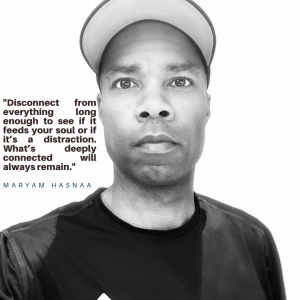
At the end of July, I wrote about turning notifications off on my phone. I noted that it was a starting point in my struggle to stay focused in a distracted world. No dings or chirps, or banners appearing on the screen, to announce the arrival of a new message or reaction to a post. Because I was already, it seemed, reaching for my phone too often. I certainly did not need any other incentives to encourage that ‘bad’ habit.
But like I said, turning notifications was — and only could be — a starting point. If I wanted to work more deeply, if I wanted to be more productive, if I wanted to feel like my life stood for something meaningful … I knew that I could not stop there.
Always the Last to the Party
My love-hate relationship with social media is not a secret. There is so much about it that I find unsettling. The constant pursuit of ‘likes’. The incessant spamming from automatic bots and fake accounts. The ‘experts’ selling their secret sauce that promises — if you ‘Click Here’ or ‘Download Now’ — that you can achieve the same level of success as them. The incomprehensible, ever-changing, algorithms. The compulsion, or ‘necessity’(depending on your point of view), to be connected 24/7.
Maybe that is why, when it comes to social media, that I have always been the last to the party … and, it seems, the first to leave. I did not race to sign up for Facebook or Twitter when they launched. It took even longer for me to create an Instagram account only to delete it twice before starting all over again. My TikTok account lasted less than ten minutes. Snapchat? Pfft. Clubhouse? Is that still a thing?
A quick survey of the social media apps I use is, perhaps, the best indicator of my attitude towards them.
| It is an afterthought. Sometimes I tweet, but it is not consistent. | |
| I have established a routine of one post a week, but I check and/or reply to comments about [roughly] once a month. And messages sent through Facebook Messenger? Good luck with that! | |
|
It has become, more out of necessity than any real ‘love’ for it, my go-to app. It took me a while to set up a social media calendar to manage content, but it has allowed me to be consistent in posting to the app. |
In a way, I am that guy standing on the riverbank and unwilling to put his foot in the water. Not because the water is cold, but because he knows what will happen if he goes all in.
I am not a savvy technology user. I have an addictive nature, so even when there has been nothing new to see, I would open an app. That is why I recently deleted (and not for the first time) Facebook, Instagram, Twitter, Google, and Outlook from my phone. Because I want to get back to the things I value. I do not subscribe to, or want to be an adherent of, the ‘always-on, always available’ cult. There are times when I believe that we should be unavailable in order to recharge, to clear out the mental clutter, to simply … be.
On Becoming a Digital Minimalist
In this fast-paced, highly distracted, always-on world, how do we simply be? The starting point is embracing, as Cal Newport explains in his book, Digital Minimalism: “A philosophy of technology use in which you focus your online time on a small number of carefully selected and optimized activities that strongly support things you value, and then happily miss out on everything else.”1
I am attempting to adopt that ‘philosophy of technology use’ and, at the same time, be patient and somewhat forgiving with myself as I implement it in my own life. In the early days of this attempt at digital minimalism, the results give cause for hope. Because I’m writing more. I finished, and passed, a course that will help me set up my business. I am reaching for my phone less (sometimes I still pick it up only to remember, once it is unlocked, that I deleted all the social media apps). There is ‘more time’ in the day to get things done (of course, the same amount of time has always been there, I am just more focused and intentional in my use of it).
Over the years, I have experimented with social media detoxes and sabbaths, but I understand now that they are not the same as digital minimalism. Because I am not looking to go back to using the same apps in the same way as I might have after a 30-day absence. My goal is, instead, to change my long-term use and relationship with them for the better. It is not a one-time hit or miss scenario. When it comes to digital minimalism, “the key to sustained success with this philosophy is accepting that it’s not really about technology, but is instead about the quality of your life.”2
Becoming a digital minimalist is a part of my journey to become who I dare to be, and to, ultimately, live a life worth living.
1 Cal Newport, Digital Minimalism: Choosing a Focused Life in a Noisy World (New York: Penguin, 2019), 28.
2 Newport, 253.
[…] is digital minimalism? In his book, and this is an appropriate place to begin, Newport defines it […]